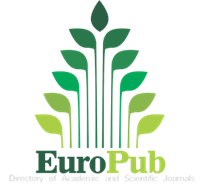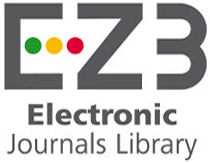Abstract
Background: Pressure injury (PI) can occur as a result of prolonged bed rest in immobilized patients. The healing process is often slow if the wounds are not managed comprehensively, particularly in elderly patients or patients with neurological disorder, diabetes mellitus, and malnutrition. Proper treatment can improve the healing process.
Case illustration: A 66-year-old female with multiple comorbidities presented with PI on the left lower back, as well as the sacral and right gluteal regions. She was diagnosed with grade 3 and unstageable PI, and was treated using a multidisciplinary approach. Her wounds were treated with a combination of hydrogels and polyurethane foam dressings.
Discussion: Managing comorbidities, optimizing local wound care, regular repositioning in special mattress, and improving nutritional status are necessary to accelerate healing in cases of PI. There was an increase in the wound granulation and epithelialization, as well as a decrease in the ulcer size and exudates after 16 weeks of treatment. A considerable amount of time is needed to treat grade 3 and unstageable PI in an immobile elderly patient with multiple comorbidities.
Conclusion: Multidisciplinary collaboration among healthcare workers is essential for the treatment of PI in elderly populations.
References
- Edsberg LE, Black JM, Goldberg M, McNichol L, Moore L, Sieggreen M. Revised national pressure ulcer advisory panel pressure injury staging system. J Wound Ostomy Continence Nurs. 2016;43(6):585-97.
- National Pressure Úlcer Advisory Panel. NPUAP position statement on staging – 2017 clarifications [internet]. [cited 2023 Mar 3]. Available from: https://cdn.ymaws.com/npiap.com/resource/resmgr/npuap-position-statement-on-.pdf
- Mervis JS, Phillips TJ. Pressure ulcers: Pathophysiology, epidemiology, risk factors, and presentation. J Am Acad Dermatol. 2019;81(4):881-90.
- Amir Y, Lohrmann C, Halfens RJ, Schlos JM. Pressure ulcers in four Indonesian hospitals: Prevalence, patient characteristics, ulcer characteristics, prevention, and treatment. Int Wound J. 2017; 14(1): 184-93.
- Hajhosseini B, Longaker MT, Gurtner GC. Pressure injury. Ann Surg. 2020;271(4):671-9.
- Qaseem A, Humphrey LL, Forciea MA, Starkey M, Denberg TD. Treatment of pressure ulcers: A clinical practice guideline from the American College of Physicians. Ann Intern Med. 2015;162(5):370-9.
- Norton L, Parslow N, Johnston D, et al. Best practice recommendations for the prevention and management of pressure injuries. In: Orsted HL, Rosenthal S, editors. Foundations of best practice for skin and wound management. Canada: A supplement of Wound Care Canada; 2017. p. 64.
- Weller C, Team V. Interactive dressings and their role in moist wound management. In: Rajendran S, editors. Advanced textiles for wound care. 2nd ed. United Kingdom: Woodhead Publishing Limited; 2019. p.105–134.
- Kumar A, Wang X, Nune KC, Misra RDK. Biodegradable hydrogel-based biomaterials with high absorbent properties for non-adherent wound dressing. Int Wound J. 2017;14(6):1076-87.
- Zhang L, Yin H, Lei X, et al. A systematic review and meta-analysis of clinical effectiveness and safety of hydrogel dressings in the management of skin wounds. Front Bioeng Biotechnol. 2019;7:1-16.
- Walker RM, Gillespie BM, Thalib L, Higgins NS, Whitty JA. Foam dressings for treating pressure ulcers. Cochrane Database Syst Rev. 2017;2017(10):CD011332.
- Cereda E, Neyens JCL, Caccialanza R, Rondanelli M, Schols J. Efficacy of a disease-specific nutritional support for pressure ulcer healing: A systematic review and meta-analysis. J Nurt Health Aging. 2017;21(6):655-61.
Recommended Citation
Kusumawardhani, Dina; Yusharyahya, Shannaz Nadia; Legiawati, Lili; Astriningrum, Rinadewi; and Adistri, Kara
(2023)
"The importance of multidisciplinary approach in management of pressure injury in elderly with multiple comorbidities,"
Journal of General - Procedural Dermatology and Venereology Indonesia: Vol. 7:
Iss.
2, Article 5.
DOI: 10.7454/jdvi.v7i2.1151
Available at:
https://scholarhub.ui.ac.id/jdvi/vol7/iss2/5






























